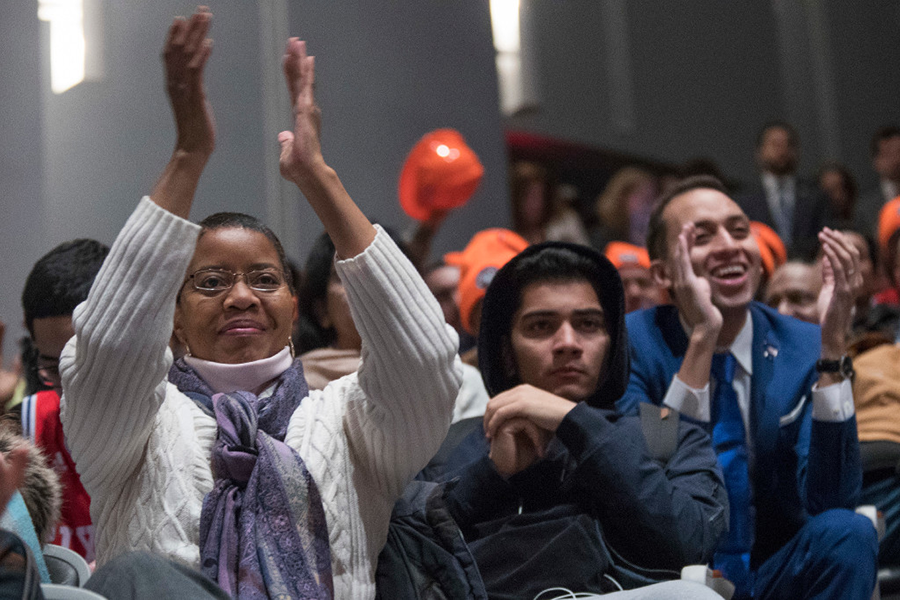Will it work? Cuomo proposes free college for thousands in NY
Loading...
Amid a soundtrack of Bon Jovi's "Work for the Working Man," New York Gov. Andrew Cuomo took the stage Tuesday morning at LaGuardia Community College in Queens, joined by liberal darling Sen. Bernie Sanders (I) of Vermont, to unveil concrete plans for a much-hyped proposal: free college tuition.
Gov. Cuomo, a centrist Democrat who is rumored to have presidential aspirations of his own, announced a plan that would make attending a state or city university in New York, including two-year programs, free for New Yorkers whose families earn $125,000 or less per year. If he can muster sufficient support from state lawmakers to approve his plan, the three-year incremental rollout will begin this fall.
"College is a mandatory step if you really want to be a success," Cuomo said Tuesday, as The Washington Post reported. "And the way this society said we’re going to pay for high school because you need high school, this society should say we’re going to pay for college because you need college to be successful. And New York state is going to do something about it."
Dubbed the Excelsior Scholarship, the funds are designed to supplement existing state and federal loan and grant programs. It remains unclear how the state will pay for the program, which would cost an estimated $163 million once fully functioning, though the actual cost could vary significantly depending upon participation, as The New York Times reported.
In-state tuition is currently $6,470 per year for four-year State University of New York (SUNY) schools and $4,350 per year for two-year community colleges. Costs for City University of New York (CUNY) schools are about the same, at $6,330 and $4,800, respectively.
The proposal comes as the cost of college attendance has soared in recent years. Even middle-income students attending public institutions have felt the pinch, as The Christian Science Monitor's Jessica Mendoza reported from Fullerton, Calif., last month:
Years of state divestment in public higher education, among other factors, have placed greater financial burdens than ever on students and families, education experts say. Even when students manage to secure aid for tuition, food, housing, transportation, and school supplies can combine to make money a constant concern.
Cuomo's proposal is not the first state-level initiative of its kind. There are at least 85 initiatives at the municipal and state levels that aim to cover community college costs, according to the Upjohn Institute. Tennessee, Oregon, and Minnesota offer free community college programs, with Tennesee's program considered a model for reducing education costs, as the Post reported.
Local initiatives, too, have shown promise, including an 11-year-old program in Kalamazoo, Mich., known as the Kalamazoo Promise. The initiative relied on private donors to offer scholarships to the city's high school graduates, providing a broader source of social uplift, as the Monitor's Simon Montlake reported last month:
To a large extent, it’s working. The Promise has helped revive Kalamazoo’s public schools, sent hundreds of kids to college who normally wouldn’t have gone, and pumped new vitality into the city. But the experiment has also taken longer to reap benefits than many expected and exposed deeper social problems, spurring changes in the city’s approach.
As with Kalamazoo, the initiative in New York offers a case study from which local, state, and federal leaders can learn to inform their decisions about the path ahead, including whether and how to implement tuition programs across the country. Senator Sanders, who was greeted with chants of approval upon his introduction Tuesday, noted that the concept of free college tuition is something being considered nationwide.
"This is an idea that is not only going to reverberate throughout the state of New York, but throughout the country," Sanders said, as reported by the Post. "What today’s message is about is if you are in the fourth grade and you start studying hard, you will be able to get the college education you need to make it to the middle class, regardless of your family income. That’s revolutionary."






